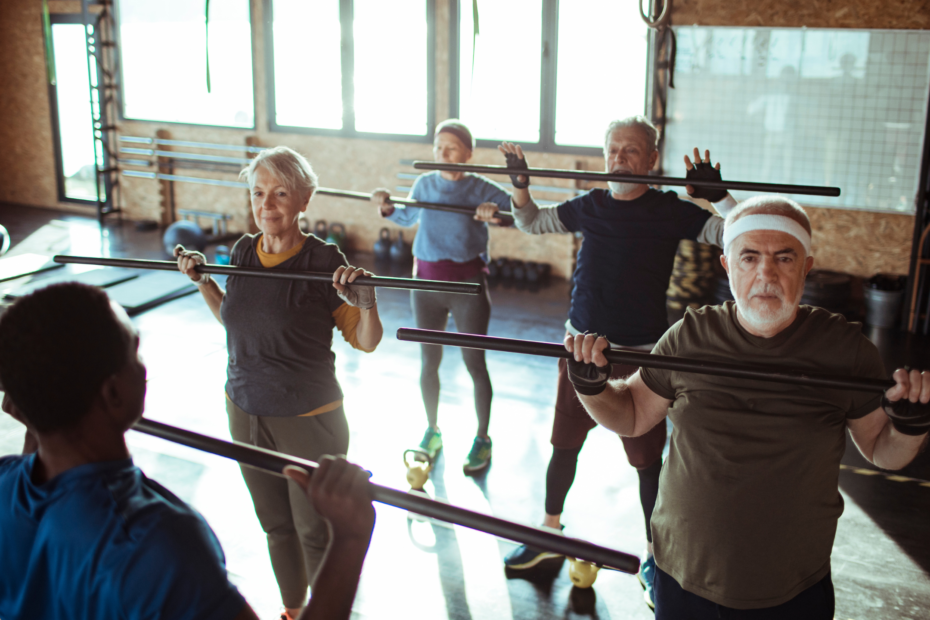Exercise for older adults is often stereotyped into low intensity & low impact movements – and older adults can often be wary of incorporating more rigorous training into their programme, for fear of injury.
However, a large amount of research suggests that higher velocity, or power training is very safe for the healthy aging population – and is also an essential type of exercise to increase independence and improve activities of daily living.
What?
Power training is high force combined with high velocity (strength and speed). So instead of just lifting a heavy weight (strength training) you’re trying to lift a heavy weight as quickly as possible (power training).
Another way to think about it is crossing a wide, busy road. With strength, you have the ability to make it from one side of the road to the other. With power, you have the ability to make it from one side of the road to the other before the traffic lights change!
Typically, power-focused exercises use a slightly lighter weight, but with a much higher force velocity.
Why?
There are a range of benefits from power training, both for the general population and for older adults. These include:
Strong neurological adaptations – power training can enhance the body-brain communication channel – essentially the brain is better able to recruit the muscles to bring about a particular force or movement.
Significant improvements muscle strength and physical performance result in increased independence and a greater capacity for perform everyday tasks
Power training has a strong focus on Type 2 muscle fibres: we know that Type 2 (fast twitch) muscle fibres take a big hit as we age – power movements are a great way to preserve this lean muscle mass
Power training can improve our dynamic balance – great for preventing falls as we age
Power training help help us to develop stronger connective tissue, including tendons, ligaments, fascia and joint capsules. This can drastically reduce our risk of injury.
How?
Recent exercise prescription guidelines advise older adults to lift heavy, (working up to 80% of their one rep maximum) and incorporating faster /more powerful repetitions when good form has been established.
Control is key – so by all means incorporate some speed, but only when you know the movement can be performed correctly and the load is appropriate.
To focus on compound lifts – using more than one muscle group. Olympic lifting is full of powerful movements, so perhaps it’s time to start getting to grips with your squats and deadlifts.
Emphasise exercises performed in weight bearing (standing)
Incorporate jumping, focusing on improving height of jumps. Exercises such as jump squats, lunge hops, and box jumps can be a good place to start. Remember not to go too hard too early – as with any form of training, you need to start at the bottom and build up!
Play with your tempo – we know that power is all about speed, and we also know that the body thrives on variety. So why not play about with your timing.
Why Not Try 3 sets of squats (10 reps each)
Set 1 – 4 counts on the way down, 1 (powerful!) count on the way up
Set 2 – 1 count on the way down, pause, 4 counts on the way up
Set 3 – every second repetition, add a jump!
Remember if you’re over 65, it’s important to get medical clearance prior to implementing this sort of training into your programme. We’d recommend working with a health and fitness professional where appropriate.

